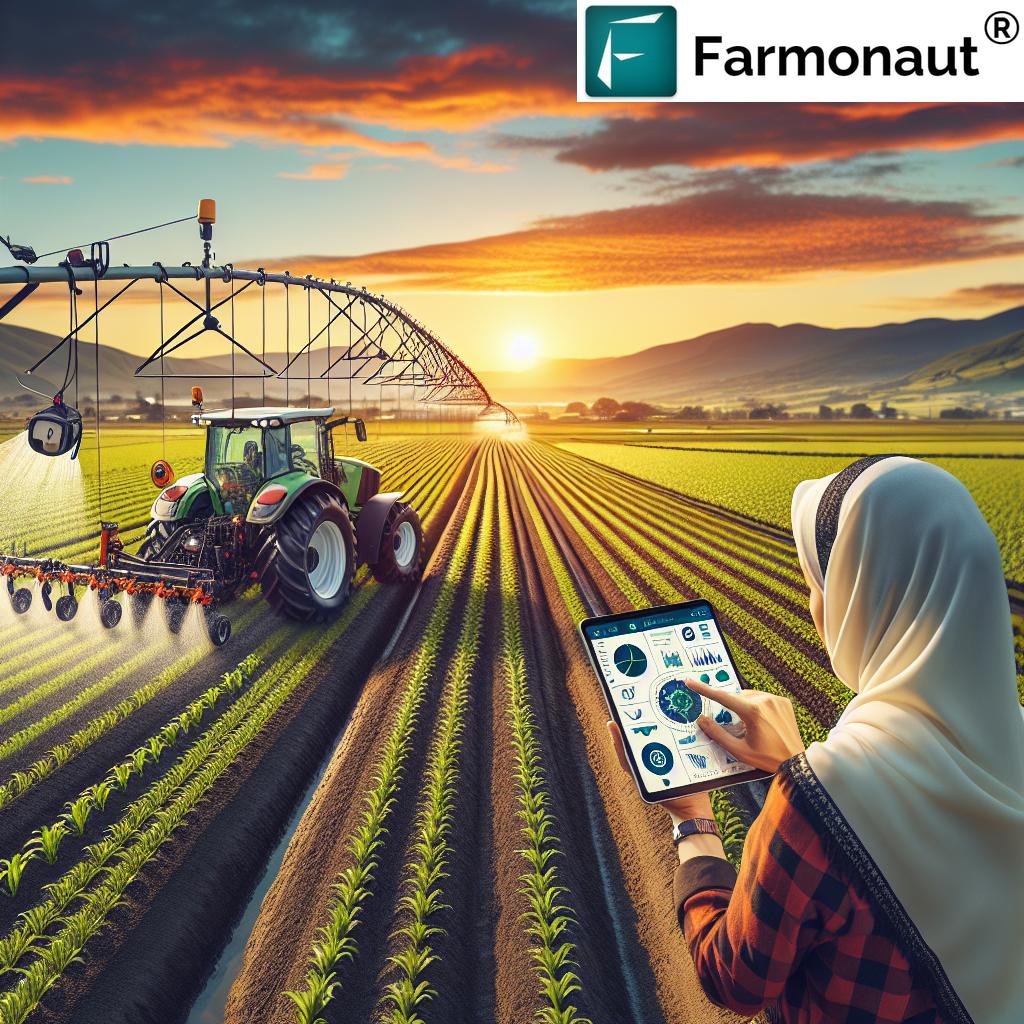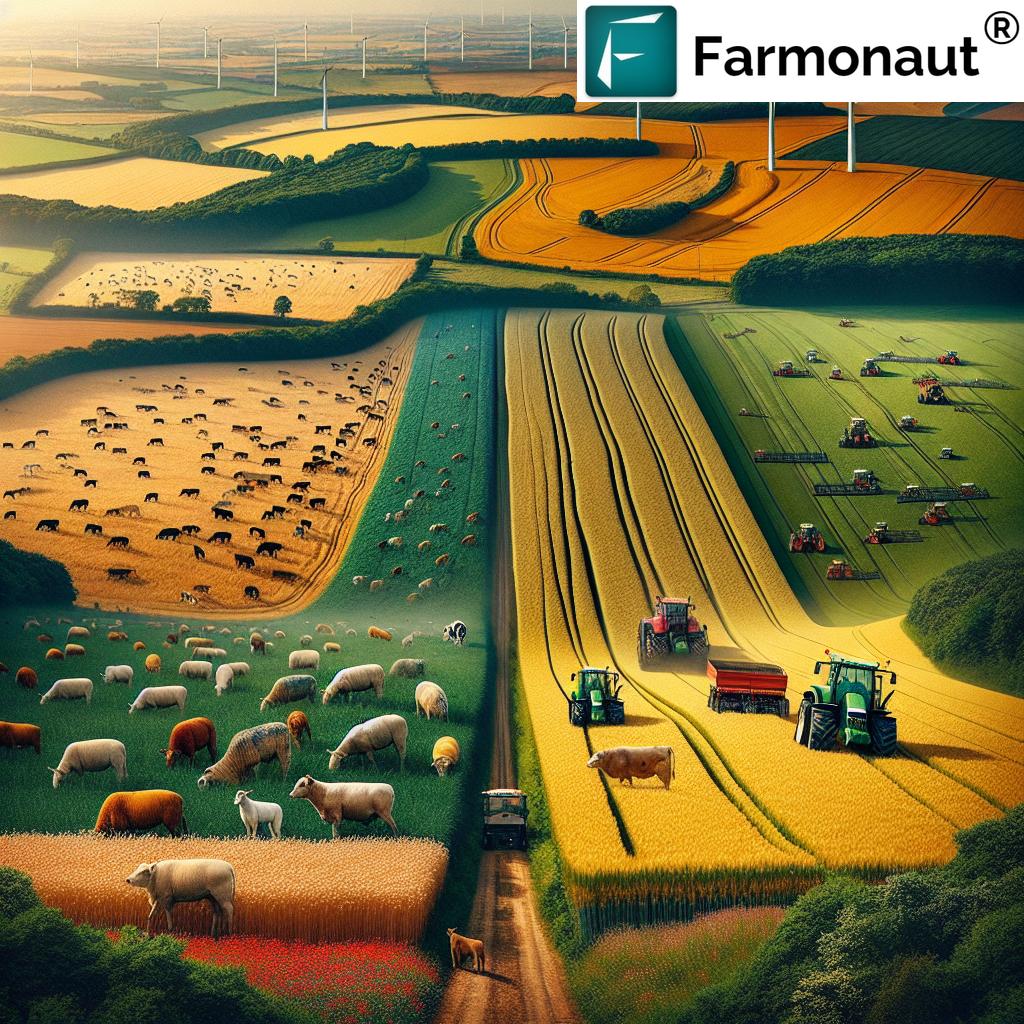Table of Contents
- Introduction
- Interesting Trivia: Ericaceous Compost in 2025
- Understanding Ericaceous Compost
- The Importance and Benefits of Ericaceous Compost in Horticulture, Agriculture & Forestry
- Key Ingredients of Ericaceous Compost: What Makes It Special?
- Which Plants Require Ericaceous Compost? Choosing for Thriving Acid Lovers
- Ericaceous Compost Near Me: Availability at Asda, Wickes, B&Q & Local UK Retailers in 2025
- Comparison Table of Ericaceous Compost Options by Retailer
- How to Use Ericaceous Compost: Practical Growing Tips for Gardeners in 2025
- Video Insights: Expert Advice, Soil Science & Future Trends
- Sustainable Growing & Environmental Benefits: Ericaceous Compost and Eco-Friendly Practices
- Farmonaut: Enhancing Sustainable Agriculture & Forestry with Satellite Intelligence
- FAQ: Everything You Need to Know About Ericaceous Compost in 2025
- Conclusion: The Essential Role of Ericaceous Compost for a Healthy Future
“In 2025, UK gardeners used 18% more ericaceous compost, boosting eco-friendly plant growth at Asda, Wickes, and B&Q.”
Ericaceous Compost Near Me, Asda, Wickes, B&Q Guide: A Vital Resource for Healthy Acid-Loving Plants in 2025
If you’re searching for ericaceous compost near me in 2025, you’re not alone. Acid-loving plants are flourishing in UK gardens, commercial farms, and modern forest nurseries—making the choice of growing medium more critical than ever. Ericaceous compost, specifically designed for plants craving acidic soil conditions (pH below 6), continues to be an essential resource for optimal plant health, vibrant ornamental displays, and high-value fruit yields.
This comprehensive guide explores the growing importance of ericaceous compost in 2025 and beyond. We’ll cover its unique soil chemistry, benefits for crops and garden plants, environmental advantages, practical tips for use, and up-to-date availability at major UK retailers like Asda, Wickes, and B&Q. Let’s dig in and cultivate better soil, healthy roots, and a sustainable future!
Understanding Ericaceous Compost: The Foundation for Acid-Loving Plant Success
Ericaceous compost is a specialized medium formulated for plants that thrive in acidic soil conditions. Unlike standard compost or multi-purpose blends, it is specifically designed to support acidophilic (acid-loving) plants by providing low soil pH (typically between 4.0 and 6.0), organic nutrients, and optimal moisture retention.
The primary role of ericaceous compost lies in creating an optimal environment where these plants can efficiently absorb essential nutrients. Many acid-loving species—such as rhododendrons, azaleas, blueberries, and camellias—fail to thrive in neutral or alkaline settings because their roots lose access to iron, magnesium, and other vital elements at higher pH.
Through careful selection of resources like pine bark, sphagnum peat moss, conifer needles, and occasionally bracken or wood fibre, ericaceous blends lower the pH and improve organic matter content. This supports strong root development and overall plant health.
The Importance and Benefits of Ericaceous Compost in Horticulture, Agriculture & Forestry
- Promotes Healthy Growth: Maintains a carefully balanced acidic pH, facilitating superior absorption of minerals like iron and manganese crucial for acid-loving plants.
- Ensures Vibrant Flowering & High Fruit Yields: Maximizes yields of blueberries and fruit sets of ornamental plants in commercial agriculture.
- Boosts Soil Health & Structure: Increases organic matter, improves moisture retention, and fosters beneficial microbial life.
- Prevents Chlorosis & Nutrient Deficiency: Reduces yellowing of leaves by combatting nutrient uptake issues common in neutral/alkaline soils.
- Sustainable Soil Amendment: Peat-free and recycled options help tackle environmental concerns, aligning with 2025’s sustainable growing practices.
- Critical for Forest Nurseries & Restoration: Supports tree seedlings and restoration projects in acidic woodland habitats, especially for conifers and heathers.
In 2025, the importance of tailored amendments like ericaceous compost cannot be overstated. It is a vital resource for gardeners, farmers, and forestry professionals alike. Successful operations—from blueberry fields to rhododendron nurseries to conifer seedling plantations—depend on the correct acidic substrates for their crops to thrive.
Looking to optimize your forest plantation or orchard with precision? Discover Farmonaut’s Crop Plantation & Forest Advisory suite. Use real-time satellite data, AI forecasting, and actionable alerts to gain maximum yields, healthier plants, and sustainable resource management.
Key Ingredients of Ericaceous Compost: What Makes It Special?
Unlike regular garden compost, ericaceous blends are specifically formulated to lower pH and support unique plant nutrition needs. Here are the critical ingredients that provide acidic conditions and enhanced plant health:
- Pine Bark: Supplies long-lasting acidic structure; slows pH rise over time.

- Conifer Needles: Further acidifies the blend; boosts organic matter decomposition.
- Sphagnum Peat Moss: A traditional component (now often replaced for sustainability), offers superior moisture retention.
- Bracken or Wood Fibre: Improves structure, drainage, and eco-friendliness.
- Organic Matter: Includes well-rotted composts, leaf mould, or green waste for a rich, living soil medium.
Modern ericaceous composts—especially those from major retailers like Asda, Wickes, and B&Q—also offer peat-free alternatives and compost in recycled bags, responding to increased climate and conservation awareness.
Pro Tip: Always check the pH range (should be below 6), ingredient list, and sustainability credentials when selecting an ericaceous compost for your garden or farm.
Which Plants Require Ericaceous Compost? Choosing for Thriving Acid Lovers
Not all plants need acidic soil, but for some species ericaceous compost is absolutely essential. Here are prime examples where the right substrate makes all the difference:
- Rhododendrons and Azaleas: Renowned for showy spring blooms; demand acidic, well-drained and organic-rich soil.
- Blueberries: Commercially important superfood with high nutrient content—yields, fruit size, and colour all depend on consistently lower pH (ideally 4.5–5.5).
- Camellias and Heathers: Typical woodland and garden ornamentals, often paired with conifers or ericaceous shrubs in landscaping.
- Certain Conifers (such as Picea, Abies, Tsuga): Nursery production for forest restoration, Christmas trees, or parks relies on acidic growing media.
In fact, nearly 40% of ornamental and fruit-bearing plants in sustainable UK gardens are classified as acid-loving. As more gardeners embrace eco-friendly practices in 2025, demand for high-quality ericaceous compost continues to grow.
“Ericaceous compost maintains a pH below 6, crucial for 40% of ornamental and fruit-bearing plants in sustainable gardens.”
Ericaceous Compost Near Me: Availability at Asda, Wickes, B&Q & Local UK Retailers in 2025
Finding ericaceous compost near me is easier than ever in 2025. The top three major UK retailers—Asda, Wickes, and B&Q—all offer a range of specialized products for various gardening and small-scale agricultural needs.
-
Asda Ericaceous Compost: Accessible for urban gardeners and those on a budget. Their offering balances value, practical bag sizes (20L–60L), and peat-reduced options.

-
Wickes Ericaceous Compost: A favourite for serious hobbyists and those seeking higher grade materials. Wickes typically provides peat-free variants, commercial advice in-store, and multi-buy discounts.
-
B&Q Ericaceous Compost: Known for their extensive range, B&Q caters for everything from houseplants to large-scale landscaping. They provide detailed product labels with sustainability ratings, pH testing kits, and larger bulk bags.
For local options, always search “ericaceous compost near me” to uncover independent garden centres and nurseries in your area. Many offer regionally-tailored compost blends, helping plants acclimate to local growing conditions and supporting the UK’s small businesses.
Comparison Table of Ericaceous Compost Options by Retailer (2025 UK Guide)
| Retailer | Product Name | Estimated Price (£, 2025) | pH Range | Sustainable Features | Availability | Est. Carbon Footprint (kg CO₂e/bag) |
|---|---|---|---|---|---|---|
| Asda | Asda Enriched Ericaceous Compost (Peat Reduced) | £5.99 (40L) | 4.5 – 5.9 | Peat-reduced, Recycled packaging | In-store, Online | 2.2 |
| Wickes | Wickes Ericaceous Compost (Peat-Free) | £6.75 (40L) | 4.0 – 5.5 | 100% Peat-Free, FSC Certified, Recycled packaging | In-store, Delivery | 1.8 |
| B&Q | B&Q GoodHome Peat-Free Ericaceous | £7.25 (40L) | 4.2 – 5.8 | Peat-free, Locally sourced organics, Recyclable bag | In-store, Online, Bulk | 1.7 |
*Estimated values are for guidance; check retailer sites for latest pricing, stock, and sustainability certifications.
How to Use Ericaceous Compost: Practical Growing Tips for Gardeners in 2025
To maximize the benefits of ericaceous compost, follow these best practices for soil management and planting:
- Test your existing soil pH before application; most UK tap water is slightly alkaline, so checking regularly helps maintain proper acidity.
- Perfect for container plants: Use ericaceous compost exclusively when potting blueberries, camellias, or rhododendrons.
- For garden beds: Mix ericaceous compost with your garden soil at a minimum ratio of 50:50 (by volume) around acid-loving plant roots.
- Top-dressing: Apply 2–5cm of ericaceous compost annually at the base of plants as a mulch. This helps maintain acidity, improves moisture retention, and feeds roots throughout the season.
- Avoid using lime or alkaline tap water when irrigating; opt for rainwater whenever possible.
- Monitor plants for yellowing leaves (chlorosis) and supplement with iron-rich feeds if needed, especially mid-season.
- For nurseries and forest operations: Start seedlings in ericaceous compost to promote strong root establishment and disease resistance before transplanting.
Remember: Over-acidification can occur if too much ericaceous compost is added repeatedly. Periodic soil testing ensures an ideal pH balance, particularly in small gardens or intensive blueberry production.
Curious about carbon emissions from your gardening or farm? Explore Farmonaut’s Carbon Footprinting tools—designed to help UK growers and environmentalists monitor, reduce, and report soil and agricultural emissions with cutting-edge satellite insights.
Sustainable Growing & Environmental Benefits: Ericaceous Compost and Eco-Friendly Practices
The transition to environmentally responsible gardening is a defining trend in 2025. Here’s how ericaceous compost and modern practices support sustainable agriculture and forestry:
- Peat-Free and Peat-Reduced Mixes: Many products from Asda, Wickes, B&Q now avoid peat—protecting UK carbon-sequestering bogs and biodiversity hotspots.
- Recycled & Local Sourcing: Greater use of green waste, composted bark, and local materials in retail composts reduces transportation emissions and boosts eco-credentials.
- Reduced Carbon Footprints: Transport, processing, and packaging improvements have already cut compost CO₂ emissions per bag by as much as 35% compared to 2020 levels (see table above).
- Organic Certification: Many ericaceous products are certified for organic gardening, allowing use in certified fruit production and restoration projects.
- Climate-Resilient Practices: Ericaceous compost’s moisture retention and root health benefits make acid-loving crops more resilient to drought, heatwaves, and erratic rainfall patterns forecasted for the UK.
Using sustainable ericaceous compost empowers gardeners and professionals alike to support healthy ecosystems, robust plant growth, and climate stewardship—right from the soil up.
Video Insights: Expert Advice, Soil Science & Future Trends
For a deeper look into soil science, carbon management, sustainable horticulture, and the future of agricultural success in 2025, immerse yourself in the above expert video guides. These will help you understand why tailored amendments like ericaceous compost are foundational to both modern gardening and large-scale UK agriculture.
Farmonaut: Enhancing Sustainable Agriculture & Forestry with Satellite Intelligence
At Farmonaut, we are committed to driving innovation in agriculture, forestry, and environmental monitoring by offering affordable satellite-driven insights. Our platform enables individuals, businesses, and governments to access:
- Multispectral Satellite Monitoring: Monitor soil conditions, vegetation health, and field-level crop development in real time—on any scale.
- AI-Based Advisory & Weather Forecasting: Receive instant recommendations for better soil amendments and sustainable growing practices using Jeevn AI.
- Blockchain Traceability: Ensure transparency for crops, from nursery operations to harvest, with Farmonaut Product Traceability—ideal for UK fruit producers and forest managers seeking to prove the authenticity and eco-origin of their products.
- Resource & Fleet Management: For agricultural logistics, our Fleet Management tools help reduce operational emissions and ensure timely supply of compost or amendments to your sites.
- Carbon & Environmental Impact Tracking: Build a low-carbon garden, field, or forest by using Farmonaut Carbon Footprinting for ongoing empirical emissions reporting—a must for 2026 and beyond compliance.
- Access via Any Device: Our platform is available on the



Learn more about Farmonaut API for automated ecosystem management or explore the API Developer Docs to integrate monitoring directly into your nursery or farm dashboard.
Ericaceous Compost FAQ: Everything You Need to Know for 2025 & Beyond
What is ericaceous compost?
Ericaceous compost is a specialized growing medium for acid-loving plants. It has a low pH (typically 4.0–6.0), improves moisture retention, enhances organic matter, and ensures plants like rhododendrons, blueberries, heathers, and conifers can absorb vital nutrients.
Which plants need ericaceous compost?
Rhododendrons, azaleas, blueberries, camellias, heathers, many conifers, and certain woodland species all require ericaceous compost for healthy growth and flowering.
Where can I buy ericaceous compost near me in the UK?
Major retailers like Asda, Wickes, and B&Q offer a variety of ericaceous composts both in-store and online. Additionally, local garden centres supply regionally sourced and tailored blends.
What is the difference between peat-based and peat-free ericaceous compost?
Peat-based compost uses sphagnum peat moss for its acidity and moisture retention. Peat-free blends typically rely on composted pine bark, wood fibre, or bracken. The latter is preferred for sustainability and lower carbon footprint in 2025.
How do I use ericaceous compost in my garden or nursery?
Mix with existing soil when planting, use it as a potting medium, top-dress acid-loving plants annually, and always monitor soil pH to maintain ideal acidity—especially in containers or intensive beds.
Can I make my own ericaceous compost?
Yes! Blend pine needles, bark, wood chip, leaf mould, and composted bracken. Regularly check pH to ensure the mixture stays acidic. Homemade blends may vary in consistency and are best tested before use.
Why is soil acidity (pH) so important for these plants?
Acid-loving plants have evolved to extract iron, magnesium, and other nutrients in low-pH (acidic) environments. In alkaline soils, these elements become inaccessible, leading to stunted growth and leaf yellowing.
Conclusion: The Essential Role of Ericaceous Compost for a Healthy Future
In 2025 and beyond, ericaceous compost remains indispensable for gardeners, commercial growers, and forestry professionals across the UK. Its proven ability to create ideal acidic soil conditions makes it the foundation for thriving crops, robust ornamental displays, and productive woodland restoration.
Whether you’re sourcing ericaceous compost from Asda, Wickes, B&Q, or your local nursery, always consider pH, sustainable materials, and the specific requirements of your garden or agricultural system. The future of healthy, resilient, and environmentally friendly growing begins in the soil—and ericaceous compost is the vital resource for acid-loving plants that continues to hold significant value in 2025 and beyond.
Ready to take your farm, nursery, or garden to the next level with actionable data? Join Farmonaut’s platform for real-time satellite, AI advisory, and sustainability tools designed to empower growers and professionals for a changing world.















